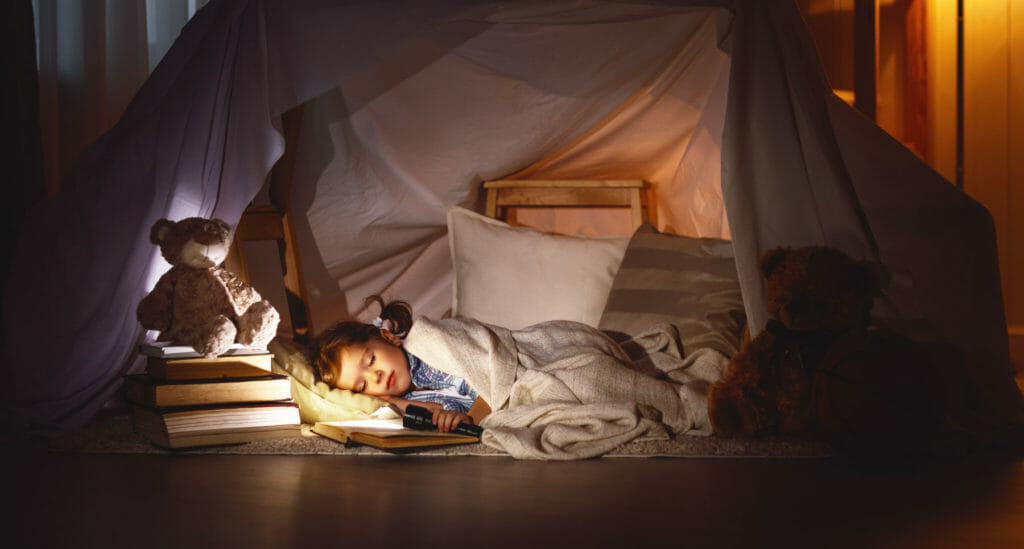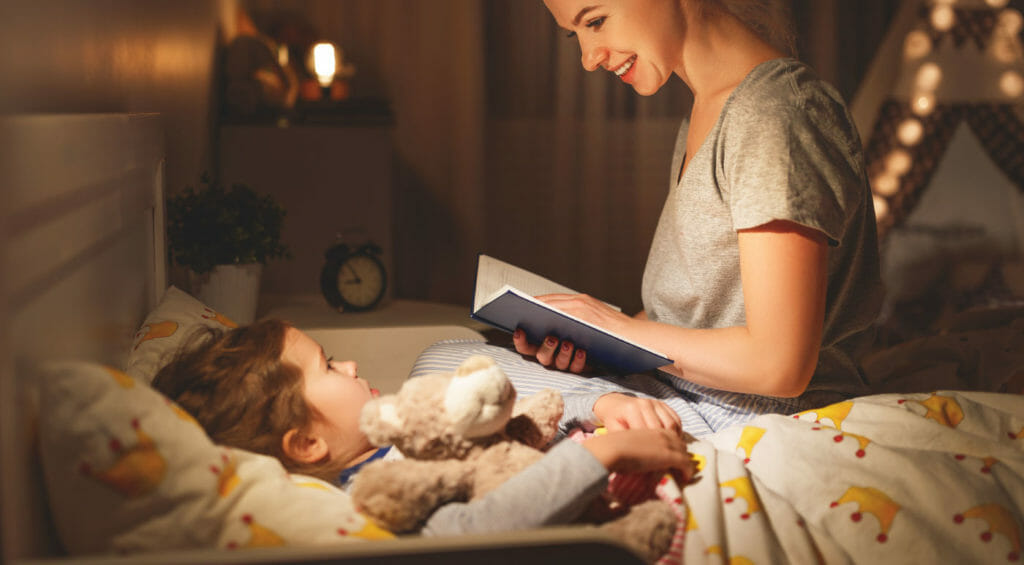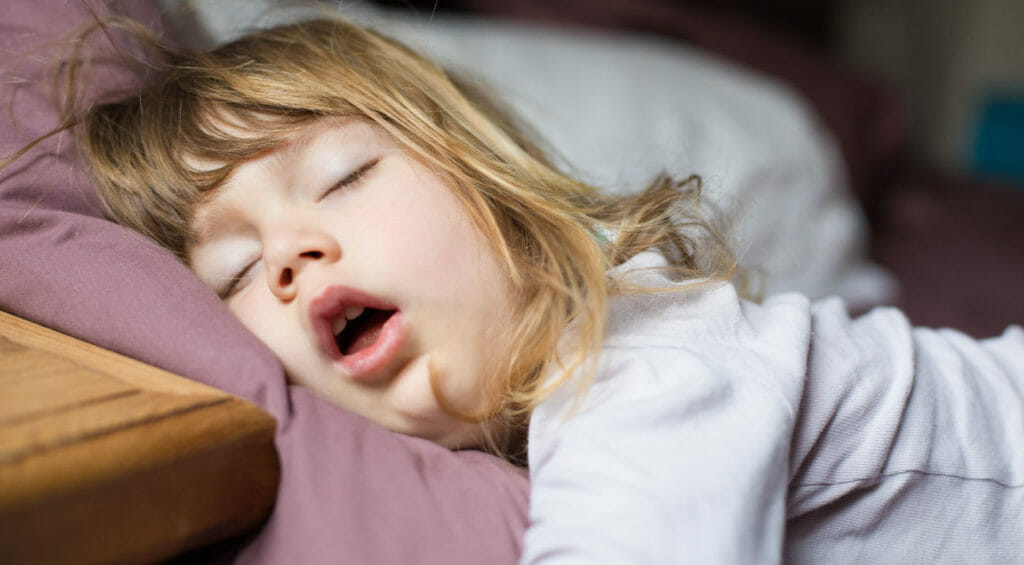Thanks to recent research on the subject, we now know that sleep is the most important factor in regulating and determining great health, and where a parent’s focus should be.
If you are reading this, you may be questioning if your child is getting optimal sleep.
Research has provided us with recommendations for the quantity of kid’s sleep that’s optimal, but this can be confusing because we also have to account for individuality, which requires measuring sleep quality too.
Add to this confusion that meeting sleep needs is not just about getting enough, but also avoiding too much, and you may just feel like throwing your hands in the air!
But don’t worry, following some simple guidelines can lead you to a better understanding of sleep, how much is really needed, and where to start if changes should be made.

Here are some recommendations provided by the National Sleep Foundation.
- Newborns (0-3 months): Sleep range narrowed to 14-17 hours each day
- Infants (4-11 months): Sleep range widened two hours to 12-15 hours
- Toddlers (1-2 years): Sleep range widened by one hour to 11-14 hours
- Preschoolers (3-5): Sleep range widened by one hour to 10-13 hours
- School age children (6-13): Sleep range widened by one hour to 9-11 hours
- Teenagers (14-17): Sleep range widened by one hour to 8-10 hours
Knowing How Much Sleep Kids Need Starts With a Clock
Sleep is naturally guided, every 24-hours or so, by a circadian clock. The timing and rhythm of this clock, located in the brain, is influenced by light and darkness. Light will signal the brain to delegate messages that support proper wake-rhythms, and darkness will signal the brain to delegate messages that support proper sleep-rhythms, all contributing to a healthy circadian rhythm.

There is, however, another factor that influences healthy circadian rhythm and this is our sleep drive, which represents our individual need for sleep. When our drive for sleep is backed by messages from a timely circadian clock, the need for sleep is naturally achieved.
Think of a bus naturally arriving to and leaving from a station at the same time everyday. This bus is your circadian clock.
Now think of your desire or motivation to jump on that bus. This is your sleep drive.
The goal is to be ready and inclined to get on that bus. But if you have not accumulated a need to sleep, you may choose another mode of transportation when the bus arrives and then look for that bus once the station is empty.
Additionally, if you confuse the clock that supports the natural rhythms of this bus, timing will be disorderly and everything becomes unpredictable.
This is one way to explain sub-optimal sleep.
What This Means for Your Kids’ Sleep
In newborns and some infants, the circadian clock is yet to be fully established, which is one of the reasons they sleep so much throughout the day as their systems adjust to their new world, tuning in to its timely nature. But when your child develops this clock, and you want to determine how much sleep they need, when that sleep occurs is just as important as how much.
For instance, if your teen appears to need 11 hours of sleep in order to not display symptoms of sleep deprivation, but that sleep is occurring late into the morning, well past the onset of sunlight, they may be “oversleeping,” compensating with quantity what they didn’t get in quality.
On the other hand if your teen is sleeping only 7 hours, but achieving that sleep at night when the brain is releasing the most melatonin –sleep hormone–, and they do not display symptoms of sleep deprivation, they are probably getting the sleep they need.

Again, humans are designed to sleep and wake up to cues of light, so here are my recommendations for making sure kids get the sleep they need, no matter what their age.
Use Light and Darkness as Place Markers
Getting the recommended hours of sleep is important. Even more important, however, is that they sleep at the proper time, completing the recommended hours within a reasonable time-frame from sunrise.
Let’s take a look at the sleep of a 10-yr old who is recommended to sleep 9-11 hours –but no less than 7 and nor more than 12–. If they are sleeping 9 hours and waking at a reasonable morning hour, but you think they should be sleeping 10 because of sleep deprivation symptoms… getting more sleep by sleeping-in is likely not the answer.
Their sleep drive will allow them to sleep, but it’s lower quality sleep as it lacks the support of their natural clock rhythms. Instead, an earlier bedtime may be more helpful.
Following this formula will take some of the guessing out, but leaves an important question.
How Will I Know my Kids Are Getting the Sleep They Need?
Pay attention to nap cues.
Remember, the younger they are, the more sleep kids need. So the younger they are the more likely it is they will not achieve all this sleep during the night. This is what makes naps quite normal. The thing to pay attention to here is the timing and duration of these naps.
If a nap is required, or easily obtained at a consistent time every day, this is a good sign your child is getting the sleep they need.
If nap time is consistent but falling asleep at night is not, then try limiting nap time.
If your child has outgrown naps, pay attention to their mood and energy. A dip in energy in the middle of the day is quite normal and doesn’t mean they are sleep deprived. Consistent dips in energy however are a strong indication their sleep needs are not being met.

What Are the Next Steps?
If you feel your child is not getting optimal sleep, meeting their sleep needs will require either moving their bedtime forward to improve sleep quantity, adding important bedtime routines to improve quality, or both.
Modern living can make this more challenging, so it’s important to approach sleep with awareness. Here is some advice you may not have considered before, simply because it wasn’t as necessary.
Block Blue Light From Their Bedtime Routine
Blue light coming from technological devices and overhead lights is the stimulant that interferes with sleep the most, because it is responsible for suppressing the release of melatonin.
Blue light “confuses the clock.”
The best analogy for this is that blue light makes days longer and nights shorter, reducing the availability of high-quality sleep.
To remove blue light used to mean turning everything off, which is effective but not practical anymore. Technology doesn’t just mean screentime. Even an overhead room light will reduce melatonin levels significantly.
Wearing blue-blocking glasses –while they are using electronic devices or under overhead lights– will protect their eyes, and therefore their brain, from the light frequencies that disrupt the circadian clock and interfere with sleep.
Turn off Your Home’s Wi-Fi Router at Night
Science is showing us that EMFs–Electromagnetic Frequencies–are not just affecting sleep, but all aspects of human health.
Wi-Fi also carries light frequencies that confuse the clock, we just can’t see them. This makes their impact less obvious.
We are electrical beings, so removing these frequencies lessens the chance of the circadian clock becoming connected to anything else.
Teach Kids to Value Sleep

Let’s face it, if you need to get your kids into bed earlier, this may come with some resistance! However, when you help them understand the importance of sleep, this can help motivate them and reduce that resistance.
All kids have those things they love. Teach them how quality sleep enhances their enjoyment of those things. If they understand early on how sleep makes everything better, they will most definitely understand that later in life. Make sure they have the right kid’s mattress that’s appropriate for their age and body type.
Also, try some positive reinforcement. Taking away is rarely a good motivator with kids. An earlier bedtime may demotivate your child, so reward them with more of those things they love earlier in the day. “The earlier I go to sleep, the more I get to play.”
Talk to Kids About Their Sleep, Every Day
When I was a kid, I never realized I had a sleep problem. Taking hours to fall asleep every night was normal, for me, so I never mentioned it to anyone.
Having conversations with your kids will give you basic information that can be very useful for getting the sleep they need and perhaps preventing chronic sleep problems like I had.
- Ask questions about their perception of sleep and how sleep feels to them
- Ask them to tell you what they appreciate about sleep most
- Ask them why they look forward to their next round of sleep
Signs of a pleasant relationship to sleep are signs they are getting the sleep they need.
So How Much Sleep do Kids Need?
The answer is not clear-cut, but here’s a simple formula you can use.
Sleep Needs = Timely Sleep – Sleep Deprived Symptoms
When kids sleep at the right time and do not show sleep deprived symptoms, they are getting the sleep they need.
If they are sleeping when they should be and in the right conditions, but still showing symptoms of sleep deprivation, trying some of these tips may be helpful.
Also, take a look at our ranking of the 10 Best Mattresses for Kids’ Beds. Better sleep for your child could be as simple as finding the right mattress. We also made this handy guide to help you choose which one is the best for your child.
Additional Resources on Kids and Sleep
Tips to Help Your Kids Sleep Better
Best Products To Help Kids Get a Good Night’s Sleep
Relaxing Children Before Bed: Quiet Time Activities
Sources:
- https://www.ncbi.nlm.nih.gov/pmc/articles/PMC5380445/
- https://www.sleepfoundation.org/excessive-sleepiness/support/how-much-sleep-do-babies-and-kids-need
- http://healthysleep.med.harvard.edu/healthy/science/how/internal-clock
- https://www.nhlbi.nih.gov/health-topics/sleep-deprivation-and-deficiency
- https://www.ncbi.nlm.nih.gov/pubmed/8821374
- https://www.ncbi.nlm.nih.gov/pmc/articles/PMC5412427/